How Long Does a Hair Transplant Last in 2025?
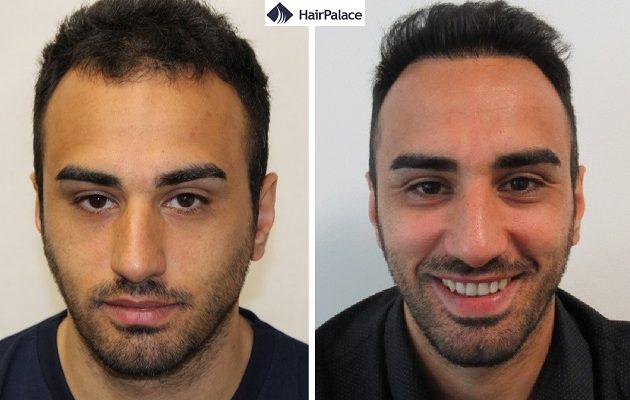
How long does a hair transplant last? Is FUE permanent?
These are two of the most common questions patients ask before their procedures.
Hair transplantation leads to permanent results, and your implanted hair follicles will stay with you for a lifetime.
If you’re considering a procedure, you’re sure to have questions, especially about the longevity of your hair restoration surgery.
In this guide, we’ll answer these questions in detail, explore what you can expect after your surgery, and provide info on different procedure types.
- Is it permanent?
- How long does it last?
- Procedure types
- Will the transplanted hairs fall out?
- Can you go bald again?
- Multiple procedures
- When can you see the results
- What to expect long-term
- Conclusion
Is hair transplant permanent?
A hair transplant is a permanent solution to restore hair growth in the areas affected by hair loss.
FUE hair transplants take hairs from the back and sides of the head (the donor area) which are not sensitive to the DHT hormone responsible for male pattern baldness.
The transplanted hair follicles retain this resistance regardless of which area of the scalp they’re placed in.
This means that the donor hair used for your hair transplantation surgery will never fall out.
It’s good to know that 2-3 months after the procedure, the implanted strands do fall out as the growth cycle of the roots restarts. As a result, the hair density will increase gradually.
But the hairs that have grown out will be permanent, and will not fall out again due to male pattern hair loss.
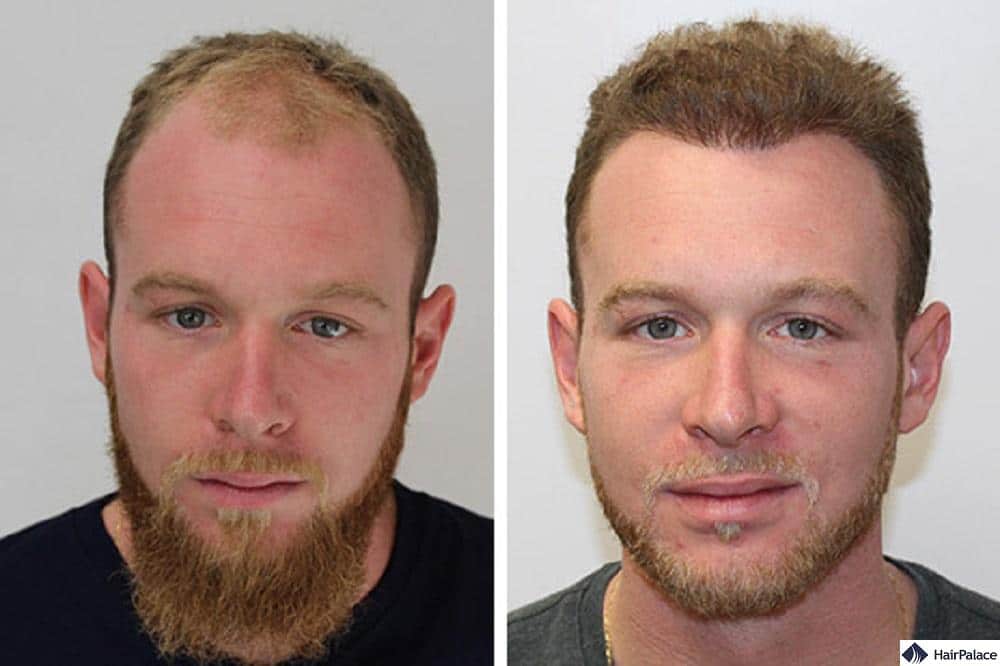
Do hair transplants last forever?
In most cases, a hair transplant will last a lifetime because healthy hair follicles are implanted into thinning or bald areas.
However, a hair transplant’s lifespan can be affected by factors, such as the quality of the procedure, as well as factors unique to the patient.
Let’s take a look at the most common ones!
Factors affecting the longevity of a hair transplant
- Experience of your surgeon
Your doctor must determine if you are a good candidate for a hair surgery and has to accurately evaluate the donor site. - Chemotherapy
While male pattern baldness will not cause the implanted follicles to fall out, other hair loss types, medication or chemotherapy may lead to hair loss in the previously treated areas. - Hormonal changes
The implanted follicles will remain resistant to the DHT hormone. However, other hormonal imbalances may affect the density of the implanted sites. - Trauma or injury
Major trauma to the scalp can not only damage the follicles but can also lead to scarring. As scar tissue doesn’t provide ideal conditions for the hairs to grow, it can lead to permanent hair loss.
What hair transplant procedure types are available?
Two types of treatment are available:
Both FUT and FUE treatments provide results that last a lifetime.
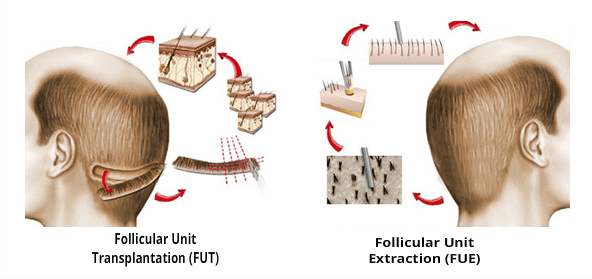
Does the transplanted hair fall out again?
Implanted hairs will start to shed around 3 weeks after transplantation.
While the sudden, larger amount of hair loss often concerns patients, it is a normal part of the recovery.
The replacement restarts the life cycle of the grafts, so the hair falls out, and the roots enter a phase of rest.
However, once the resting period ends, the roots will grow new hairs again, and the density will improve on the treated areas gradually.
Can you go bald again after a hair transplant?
In most cases, patients are unlikely to go bald again after their hair transplant surgery.
This is because hair follicles are harvested from the scalp’s back and sides, which remain resistant to DHT.
Naturally, the non-transplanted hair may continue to thin, however, the transplanted ones will stay in place.
Will you need another hair transplant in the future?
Whether you will need multiple hair transplants depends on factors such as your age and the pattern and extent of hair loss.
Many patients are satisfied with the new hair growth after their first transplant, but choose to add density to thinning areas later.
This is because the non-transplanted, original hairs on the top may continue to fall out in the future. In general, these follow-up procedures are carried out with a smaller number of grafts.
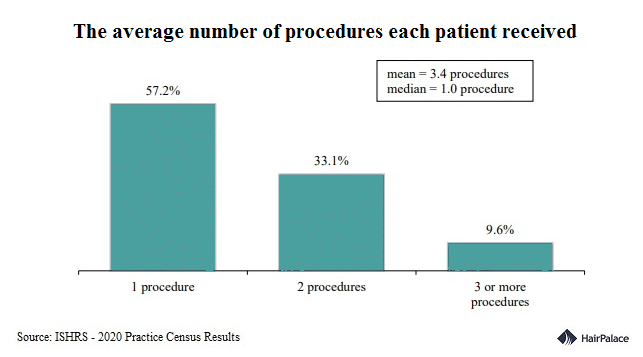
But some patients may need more than one procedure in the first place, to achieve their ideal results.
In these cases, a single operation is not enough to cover all of the thinning areas of the scalp, so the treatment is carried out in several sessions.
When can I see the results?
Transplanted follicles take time to start growing new hairs, so you won’t see results immediately.
You might notice that you shed more of your hair than usual in the first 3 months, but don’t panic: it’s a healthy part of the process.
Your surgeon should make you aware of this and other key stages beforehand.
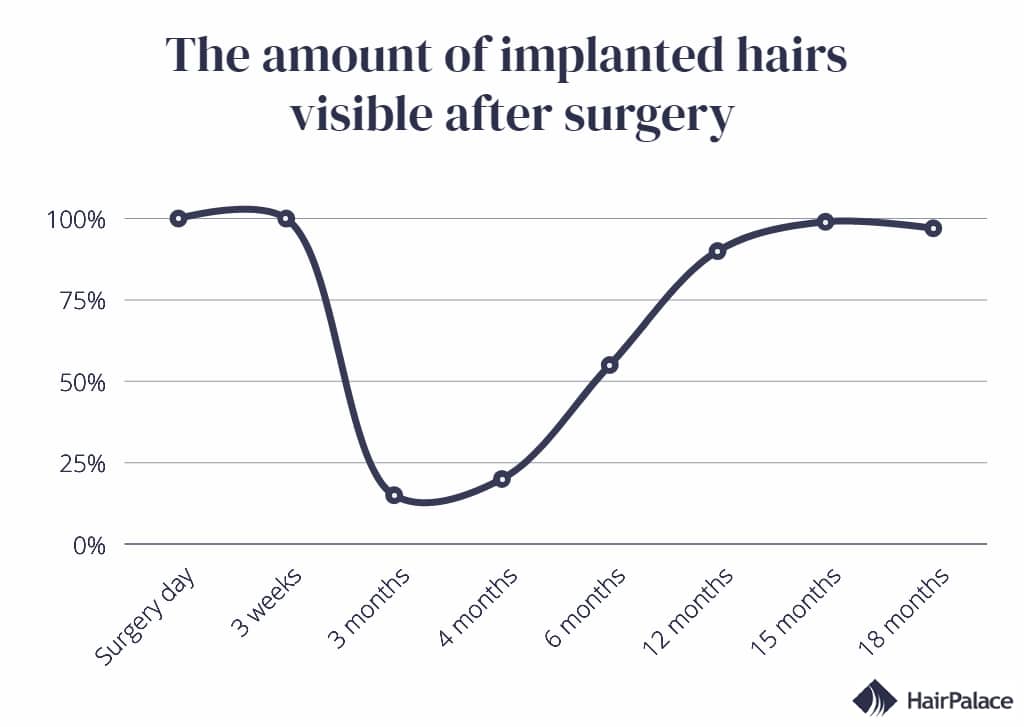
The transplanted hair follicles start to grow hair approximately 4 months after the surgery and the density will progressively increase over time.
Gradually, your new strands will match the length and texture of existing hair.
Usually, there is already noticeable improvement around the 6-9 months mark, but new hairs will continue to grow. You’ll see your final result after 12-15 months.
You can change and style it in any way you like after recovery, whether you want to cut it short, dye it, or experiment with extravagant looks.
What to expect long-term
A hair transplant offers permanent results that will last a lifetime.
As the transplanted hairs will be resistant to the effects of the DHT hormone, they will stay in place.
However, the procedure will not stop your natural hair loss. The rest of your hair may continue to thin out behind the implanted area.
If your hair loss continues to progress, you may need another surgery in the future to address other areas.
The scope of the second surgery will depend on the characteristics of your hair loss and the capacity of your donor area.
But in general, smaller follow-up treatments can be expected in the future to maintain natural-looking results.
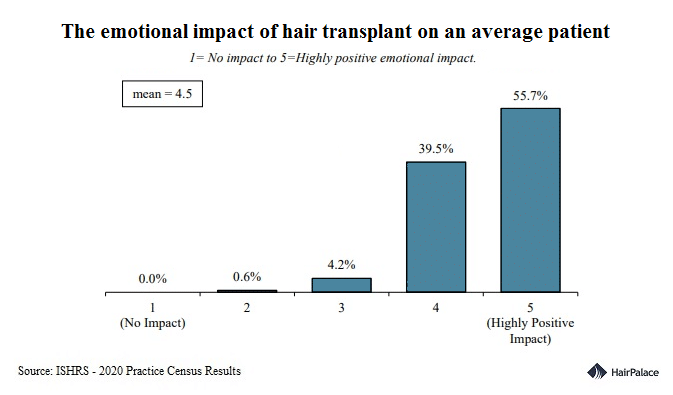
The final word
Hair transplants offer permanent results, with the implanted hairs staying in place practically for a lifetime.
This is why it is crucial to choose a specialized clinic.
An experienced, skilled surgeon will implant hairs with high density following the natural pattern of your hair growth.
This way, you can enjoy not only long-lasting, but natural-looking and aesthetically pleasing results.
How Long Does a Hair Transplant Last FAQ
Hair transplants offer long-lasting results which are considered to be permanent. Healing and recovery take a significant time, too, particularly for more extensive surgery. Hair transplants are suitable for patients affected by baldness or advanced hair loss on one or more areas of the scalp.
Hairs transplanted during surgery function like any other on the scalp and will fall out after two to four weeks. Their roots will continue to naturally grow hair for a lifetime. Patients usually take antibiotics for several days following treatment.
Many patients will achieve the results they’re looking for after one hair transplant, and their implanted hairs will continue to grow for their lifetime. But some patients will need additional procedures later in life to maintain their results.
Hair transplants are generally long-lasting because the transplanted hair is resistant to hair loss. However, natural ageing, genetics, or other hair thinning factors can still affect the surrounding hair over time, so maintenance might be needed.
Scabs after a hair transplant typically last 7 to 14 days and naturally fall off as the scalp heals. Proper aftercare can help speed up the process.
An FUE hair transplant is designed to be permanent, as the transplanted hair follicles are resistant to hair loss. However, natural aging and thinning of surrounding hair may occur over time.
Last medically reviewed on January 2nd, 2025
- Bernstein R. Follicular unit hair transplantation. 2010.https://www.researchgate.net/publication/267451081_Follicular_Unit_Hair_Transplantation_2010
- Dua A, Dua K. Follicular unit extraction hair transplant. J Cutan Aesthet Surg. 2010;3(2):76-81. https://doi.org/10.4103/0974-2077.69015
- ISHRS: 2020 Practice Census Resultshttps://ishrs.org/wp-content/uploads/2020/05/Report-2020-ISHRS-Practice-Census-05-22-20.pdf
- Unger, WP, Unger, RH, Wesley, CK. Estimating the Number of Lifetime Follicular Units: A Survey and Comments of Experienced Hair Transplant Surgeons. Dermatologic Surgery 39(5):p 755-760, May 2013.https://doi.org/10.1111/dsu.12108


